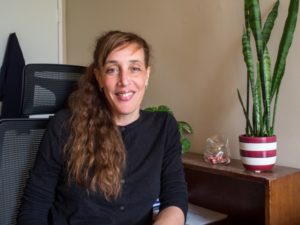
Trisha Suggs, Associate Administrator, Project Director for the State Youth and Young Adult Treatment Planning Grant, BHDDH
Tell us about the youth treatment grant you are working on at BHDDH. What does the grant focus on?
It is a SAMSHA-funded federal grant that focuses on 12 to 25 year olds. We hope to build, fund, and sustain an integrated youth substance abuse program, including screening, referral, assessment, and evidence-based interventions and supports. We also aim to increase education in the workforce and raise awareness within schools and among parents. We are guided by principles and practices that are recovery-focused, person-centered, culturally-competent, and trauma-informed.
We are currently in the planning phase (2015-2017) and will apply for the implementation grant in the fall of 2017. There are a number of different components in our application, including a policy plan, a workforce map, a workforce training implementation plan, a provider collaborative plan, a family and youth involvement plan, a social marketing plan, a financial map, and a strategic plan.
Right now we are working on the developing an understanding of all the financial resources in the state that are dedicated to substance use and mental health treatment, regardless of the source. We hope to identify the gaps between what is provided to consumers and what is needed.
As a result of this gap analysis, we hope to improve the systems that support residential treatment, interagency referrals, and impaired driving policing. It has become clear to us that while RI treatment providers deliver high quality care, there are simply not enough providers in the state to meet the demand for this age group.
What types of collaborations are integral to your work? Who are your key community and organizational partners?
We are very interested in integrating all different perspectives and experiences into our strategic plan. When I first started, I tried to meet with everyone involved with youth treatment in the state. I looked up substance use providers in the phone book and called them for their input and to find out what services they offered. I then met with a number of different schools, particularly those without state-funded student assistance services, to determine what their needs were. I also reached out to prevention specialists. And of course, all related state agencies are involved.
I strongly believe that it is very important to include everyone’s voice in this process. Whenever I encountered an opinion that was different than my own, I invited that person to be part of our advisory group. We want people who both agree and disagree. Health debate is so important.
One of our recent successes was a community planning retreat. Fifty people came out to give their opinions!
What populations does the grant emphasize? What are some of the challenges associated with these populations?
The grant is interested in all youth ages 12 to 25, regardless of their insurance classification. So this includes both Medicaid and youth covered by private insurance.
Early on, we decided to break the age range into two categories: 12-17 and 18-25. The first age group encompasses individuals below the legal age and the second group is more of a transitional period for youth, between childhood and adulthood. We would like to create treatment programs specifically for transition-age youth that reflect this reality. That way an 18-year-old does not have to be in a treatment program with someone who is 55 and at an entirely different stage of their life.
The challenges youth face really depend on their life status, which can vary widely between individuals. Different considerations must be made for youth based on whether they are homeless, in school, and/or working. In all cases, youth need to be met where they are. And that really depends on the circumstance.
What do you see as the role of prevention in addressing youth substance use in our communities?
Prevention is the key step. If we could stop early use, that would go a long way in reducing substance use later in life. I strongly believe in focusing efforts upstream. Whatever falls through the cracks, it is treatments and recovery supports job to pick up.
What key information would you like to share with local prevention providers around youth substance use?
We find that there is so much misinformation out there with youth these days. Not all youth understand the basics of drugs and their impact on the body. As result, we really support the great work that prevention providers are doing to educate our youth. The more campaigns we have that spread education and knowledge, the better.

